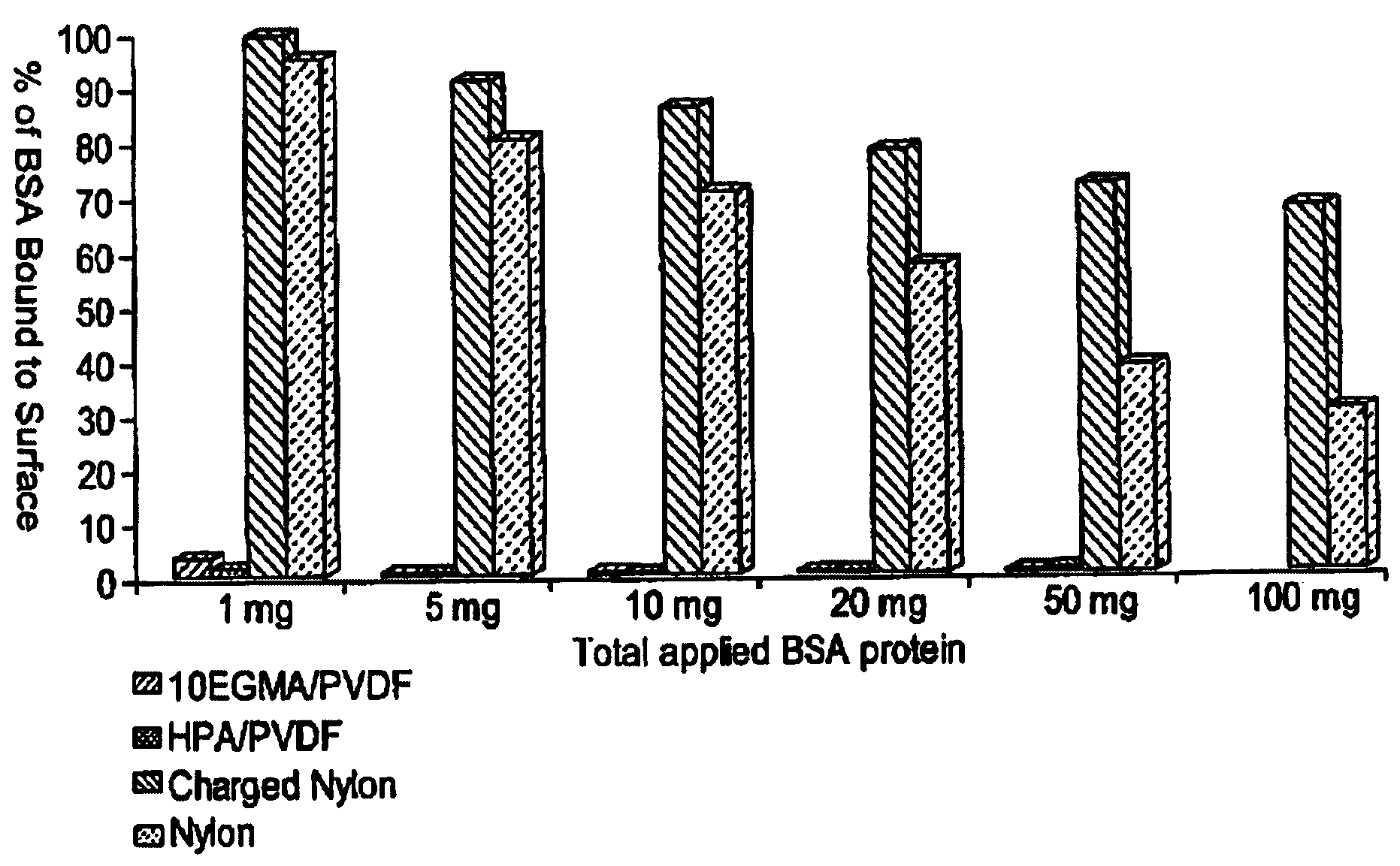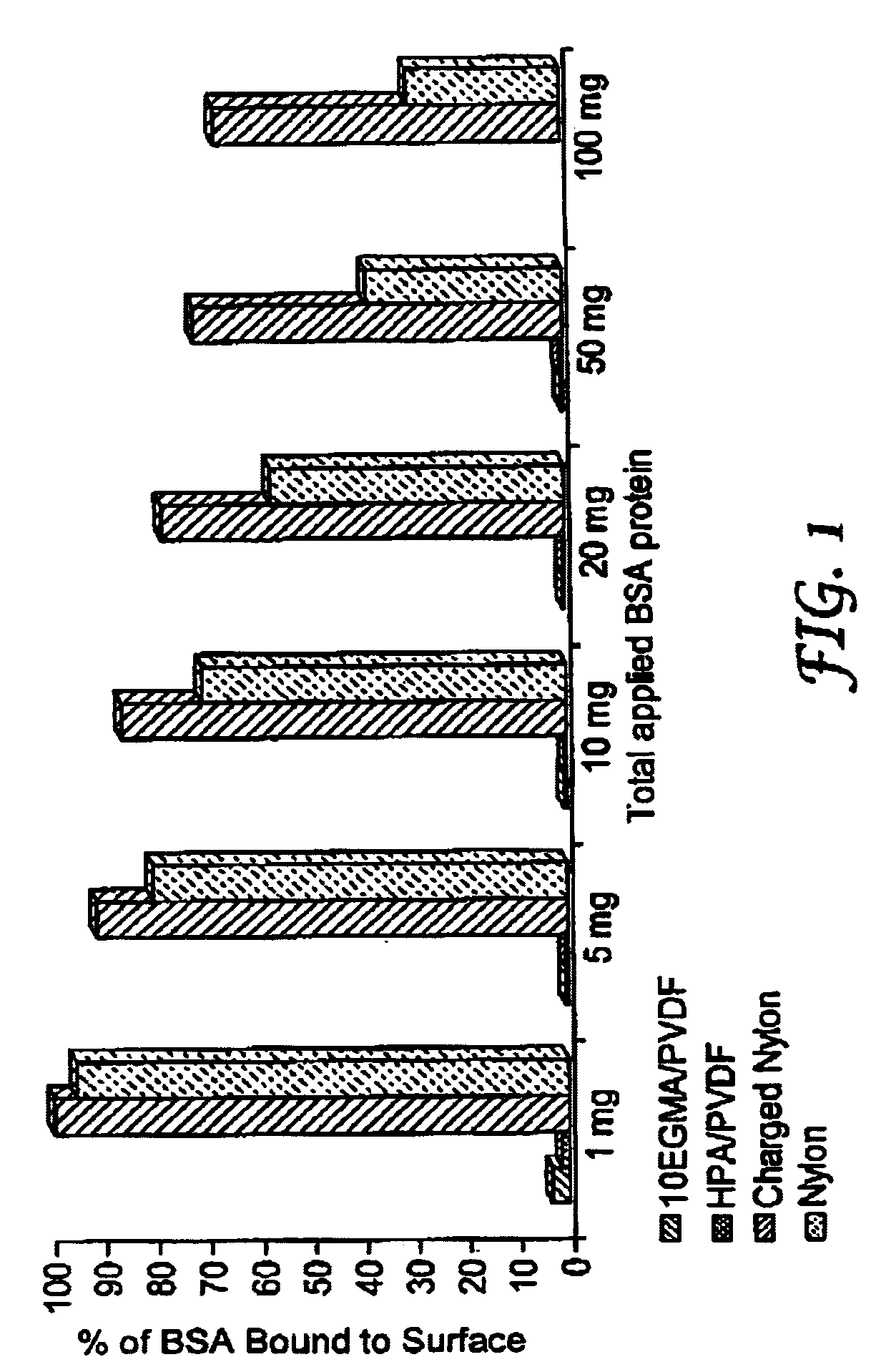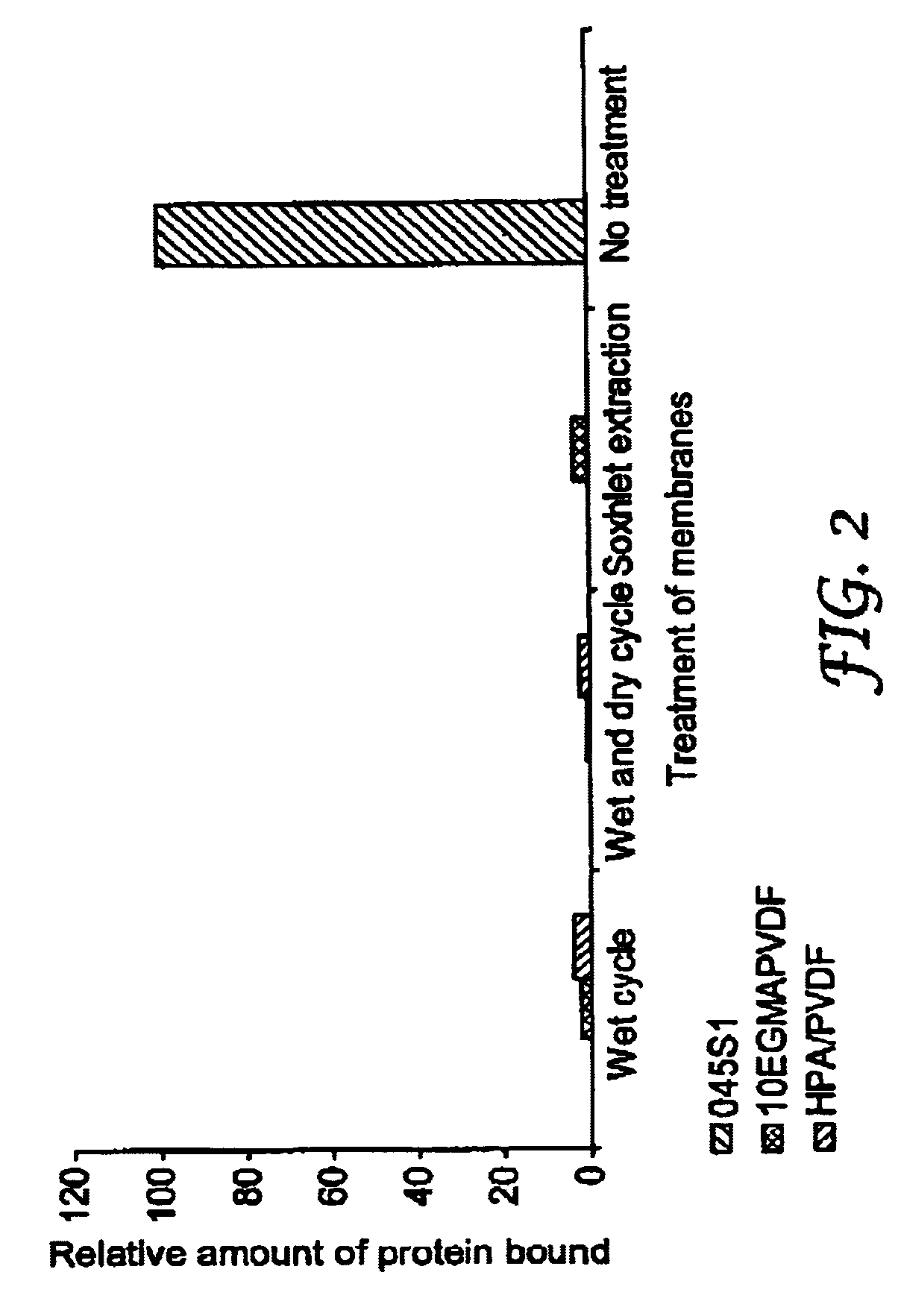Hydrophilic membrane and process for making the same
a technology of hydrophilic membrane and process, which is applied in the direction of membranes, separation processes, filtration separation, etc., can solve the problems of increasing pressure drop, reducing permeate flux, and significantly limited effectiveness of these membranes
- Summary
- Abstract
- Description
- Claims
- Application Information
AI Technical Summary
Benefits of technology
Problems solved by technology
Method used
Image
Examples
example 1
PVDF Membrane with Hydrophilic Coating Using HPA
[0050]The membrane in the hydrophobic form is first wetted with alcohol and then thoroughly washed with water. The monomer solution includes 2% HPA, 0.63% TEGDA, and 2% sodium persulfate in water. The water wetted membrane is soaked in the monomer solution for about 5 minutes and then placed between two polyester films with air pressed out with a soft roller. It is then heated at 95° C. for about 3 minutes.
example 2
PVDF Membrane with Hydrophilic Coating Using 10EGMA
[0051]The process of Example 1 is substantially repeated but with the HPA being replaced by 10EGMA (i.e., nEGMA, wherein n=10 in the formula shown above) in accordance with the present invention.
Wettability Test after Thermal Treatments
[0052]Membranes from Example 1 and 2 are boiled in IPA for 48 hrs, dry-heated at 135° C. for 1.5 hrs, autoclaved at 131° C. for 4 hrs, and dry-heated at 150° C. for 15 minutes. The wetting times in water, and 15% and 20% NaCl solution are recorded below:
[0053]Membranes Constructed in Accordance with the Present Invention (10EGMA / PVDF) vs. Traditional Wetting Polymer (HPA / PVDF)
[0054]
Membraneand treatmentIn waterIn 15% NaClIn 20% NaClMembranes after coating10EGMA / PVDFInstantInstantInstantHPA / PVDFInstantInstant3 sec.After boiling in IPA for 48 hours10EGMA / PVDFInstantinstant10 to 15 sec.HPA / PVDFInstant15–20 secHydrophobicAfter heating at 135° C. for 1.5 hours10EGMA / PVDF1 sec.20 sec.30–40 sec.HPA / PVDF30–50...
PUM
| Property | Measurement | Unit |
|---|---|---|
| pressure | aaaaa | aaaaa |
| size | aaaaa | aaaaa |
| hydrophilic | aaaaa | aaaaa |
Abstract
Description
Claims
Application Information
 Login to View More
Login to View More - R&D
- Intellectual Property
- Life Sciences
- Materials
- Tech Scout
- Unparalleled Data Quality
- Higher Quality Content
- 60% Fewer Hallucinations
Browse by: Latest US Patents, China's latest patents, Technical Efficacy Thesaurus, Application Domain, Technology Topic, Popular Technical Reports.
© 2025 PatSnap. All rights reserved.Legal|Privacy policy|Modern Slavery Act Transparency Statement|Sitemap|About US| Contact US: help@patsnap.com



